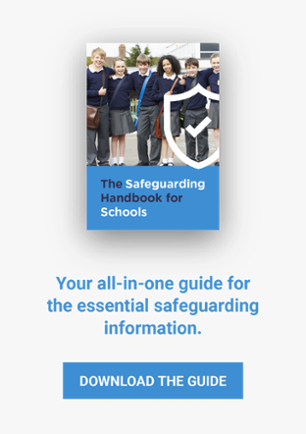Today, due to the global expansion of technology, children have greater access to the web than ever before. Pupils and young people have more opportunities to not only access educational material but also develop friendships and form online social networks. Unfortunately, this can also increase the prevalence of online grooming, exploitation, cyber-bullying, radicalisation and other dangers.
So how do we implement effective online safety strategies for safeguarding pupils, especially those with special educational needs and/or disabilities?
- Putting Whole School Monitoring Into Practice
- Keeping Up-to-Date With New Technological Developments
- Online Safety Questions to Consider
- Resources
Putting Whole School Monitoring Into Practice
Whole school monitoring is a way of bringing together all parts and processes of a school under one effective framework of online safeguarding. There are several ways you can implement Whole School Monitoring, such as the following core actions:
- Developing a whole school philosophy surrounding effective online safeguarding.
- Embedding that philosophy within the curriculum.
- Integrate this philosophy with your school or educational institute’s existing Safeguarding Policy.
- Keep up-to-date with apps and technology that children and young people are using.
Furthermore, you must involve all of your stakeholders within this process - particularly parents. It’s a school or college’s responsibility to educate parents as well as children about any potential online dangers. Schools can also implement an ‘open door policy’, meaning anyone who’s struggling with online safety issues can talk about them in confidence.
To educate pupils, schools can teach online safety as part of their curriculum. Here you can refer to the Department of Education’s Teaching Online Safety in School guidance, which will help to sure pupils understand how to stay safe under forthcoming and existing curriculum requirements. You can also hold an online safety week dedicated to educating on and improving your practices as a school.
Implementing Strategy for Staff
Staff training is an important part of maintaining the success of your online safety strategies. It takes a conscious effort from all employers and educational/care practitioners to keep up-to-date with internal and external safeguarding policies and practices.
To improve your staff’s knowledge, here are ways you can keep the sharing and updating of information flowing:
- Hold weekly staff meetings regarding any changes or issues.
- Hold weekly or monthly CPD (Continuing Professional Development) meetings, in which staff can be trained on new ideas and areas by relevant authority figures, such as the Designated Safeguarding Lead (DSL).
Keeping Up-to-Date With New Technological Developments
Staff CPD can be ensured by keeping abreast of changes to technology and apps that children use both internally and externally. A school or institute can maintain CPD through:
- Running or attending Child Exploitation and Online Protection (CEOP) or SWGfL webinars.
- Participating in online safety conferences and briefings.
- Maintaining open conversation with pupils and parents, making sure you pick up on any new developments.
Exploring Online Safety Questions During Training Sessions
When it comes to submitting information online, staff, parents and pupils need to remember to ask themselves some questions. These can help decide whether or not it’s safe or appropriate to give out any information or details to a third-party.
- What details are being given? Are they personal, such as school name, address, date of birth etc?
- Who’s likely to see and interact with this information?
- If photos are being uploaded, who’s in them and how do they feel about these photos being shared?
- If sharing an opinion online, what language are you using?
These questions can be explored during any training for staff or educational sessions for both pupils and parents.
Further Resources
For more information, you can use the following online resources for quick information:
- Childnet International - A non-profit organisation working to make the internet safe for children.
- UK Safer Internet Centre - A resource for online tips, advice and resource to help children and young people stay safe while online.
- Think U Know - Education centre for children, parents and professionals on online child abuse and exploitation.
- Barefoot - Resources for delivering computing education to primary schools.
- CEOP - Use to make a report if you suspect a child or young person is being abused online.
- Be Internet Legends - A fun online game children can use to learn about internet safety in an interactive and exciting way.
Through the increased use of the internet for much of our daily needs and information, it’s natural that both educational professionals and the children or young people we work with (or are related to) are likely to be risk-takers to a greater or lesser extent when it comes to sharing personal information.
We need to help children and young people recognise the risks they’re taking and how to better protect themselves, as well as how to appropriately deal with any potential fallout.
Online safety is just one part of implementing effective safeguarding policies for a school or institution that works with children and young people.
To ensure you aren't missing anything relating to safeguarding in schools, we'd recommend exploring our safeguarding handbook.
Download Our Comprehensive Safeguarding Handbook
The handbook distils the complex, governmental language and transforms it into one easy-to-use downloadable document. You can use it to discover the basics of safeguarding, legalities and responsibilities as well as disclosure procedures and much more.
Click the link below for your free copy.
